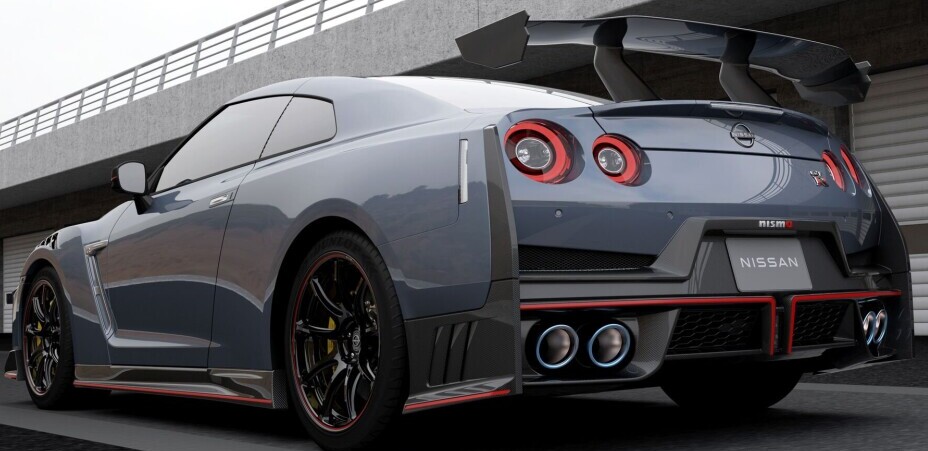
Japanese sports cars have long been the stuff of legends. They’re not just about speed and performance; they’re about a tradition that rolls down the road with precision and craftsmanship. In the world of sports cars, Japanese models are often a testament to what’s possible when excellence meets the road.
Historically, these cars have stood out due to their impeccable build quality, innovative design, and engineering marvels. They’ve set benchmarks and pushed boundaries, creating a road map for others to follow. With roots tracing back to the 1960s, when models like the Toyota 2000GT wowed audiences globally, Japanese sports cars have continuously evolved, embracing new technology while staying true to their brand ethos.
The engineering behind these cars isn’t just about satisfying the need for speed. It’s a holistic approach that balances power, efficiency, and reliability. Here, reliability isn’t just a word—it’s a legacy. Japanese automakers have mastered the art of crafting vehicles that are both fun to drive and built to last, offering peace of mind along with thrill.
Engage with these cars, and you’ll see how they reflect years of technical advancement. They’re reliable not just in function but in how they resonate with car enthusiasts around the world. The enduring fascination with Japanese sports cars genuinely underscores how these marvels of engineering continue to capture the imagination and the passion of those who crave perfection on the asphalt.
The Icons: Legendary Japanese Sports Cars That Made History

When you think of iconic Japanese sports cars, a few legendary names immediately come to mind. Each of them has left an indelible mark on automotive history, earning adoration around the globe.
The Nissan GT-R is often referred to by its affectionate nickname, ‘Godzilla.’ It’s a beast on the road with a legacy anchored in performance and power. The GT-R’s mind-blowing abilities, like its twin-turbo straight-six engine, have made it a motorsport champion and a hero among car enthusiasts. It’s not just a car; it’s a statement of engineering prowess.
Next up, the Toyota Supra combines high performance with nostalgia, thanks to its iconic design and appearance in pop culture. This car isn’t just built to impress on the track; it’s art on wheels. The Supra perfectly balances elegance with aggression, featuring potent engines and impeccable handling. If you’ve seen it in movies, you’ll know why it’s the car of choice for many.
The Honda NSX deserves a place among legends for redefining what a supercar could be. With its combination of luxury, speed, and affordability, the NSX brought supercar performance to a broader audience. It threw down the gauntlet to European giants and held its own with a blend of sleek design and reliable performance.
And let’s not forget the Mazda RX-7, brought to life by the unique rotary engine. It’s cherished in the car community for its lightweight design and smooth power delivery. The RX-7 is a rare gem that offered thrills and innovation in equal measure, and wherever you see it, it draws admiration from all.
These icons aren’t just relics of the past; they’re the beats in the heart of many motoring enthusiasts and a constant source of inspiration for what’s possible when design meets desire. Each model continues to shine brightly, embodying a perfect mix of power, passion, and performance.
Performance and Engineering: What Sets Them Apart?

Japanese sports cars aren’t just about turning heads; they’re about what lies under the hood. The engineering brilliance in these cars stands as a testament to Japanese automakers’ commitment to innovation and reliability.
What makes these cars truly exceptional is their ability to balance performance with efficiency. Take the GT-R, for example: its advanced all-wheel drive and dual-clutch transmission make sure you’re not just riding but truly driving. The engineering precision here offers a seamless blend of speed and control, making every drive an experience rather than a commute.
The brilliance of the NSX lies in its lightweight aluminum body. This design decision alone catapulted Honda ahead of many in the domain of supercars. Paired with its mid-engine layout, the NSX achieves phenomenally balanced handling that makes you feel glued to the road, all while enjoying a luxurious ride.
Then there’s the rotary engine in the Mazda RX-7, a powerhouse of innovation. This compact yet powerful engine delivers a smooth and rev-happy drive, a signature feature lovers of the brand seek. It’s the kind of performance that stays ingrained in your memory long after you step away from the driver’s seat.
Japanese vehicles are known for their ability to push the envelope with safety and technology integration, efficiently using technology to enhance performance without overshadowing the visceral thrill of driving. Whether it’s the impressive 2JZ engine in the Supra that’s famous for its robust tunability, or the precise steering and suspension systems found across these models, Japanese sports cars promise an unforgettable ride that captivates both novice and seasoned drivers alike.
Design and Characteristics: Beyond Just Looks
Japanese sports cars are not only built to perform; they’re designed to captivate. The aesthetics are a crucial part of the package, reflecting both tradition and forward-thinking in unique ways.
The sleek lines and aggressive stances of these cars aren’t just for show. The aerodynamic designs, like those you’ll find on the Toyota Supra, are crafted to slice through the air, improving both performance and fuel efficiency. Every curve and contour of these cars is carefully designed to maximize performance while making a visual impact.
One of the distinctive features of the Honda NSX is its groundbreaking aerodynamic design, which offers superior visibility and a driver-focused interior. The cockpit is designed for comfort and ease, making sure the driver feels in control no matter how fast the car is going.
Japanese designers have a knack for blending form with function. The interiors of these sports cars often feature a minimalist yet luxurious style, focusing on creating a driver-centric environment. High-end materials, comfortable seating, and intuitive layouts are standard, ensuring that the experience inside the car matches the spectacle outside.
Then there’s the Mazda RX-7 with its pop-up headlights—an iconic design choice that became a hallmark of its era. Details like these don’t just add character; they create a bond with those who have a deep appreciation for car culture.
Cultural influences play a role too. Japan’s rich history of craftsmanship and innovation is reflected in every seam and button. These cars embody a philosophy where art meets precision engineering, giving car enthusiasts both beauty and substance. They’re not just about glamour; they’re about a unique spirit that thrives on innovation and style.
Each model is a testament to how design elements and characteristics continue to inspire a global audience, creating icons that are not only admired but loved. They embody a unique blend of past achievements and future aspirations, making each drive as memorable as the cars themselves.
The Popularity Factor: Why Are They So Beloved?
Japanese sports cars aren’t just admired for their looks and performance. A vast community across the globe fuels their popularity, with fans who appreciate the perfect blend of creativity and engineering that these cars represent.
The community aspect plays a huge role. Car enthusiasts, collectors, and hobbyists have created a vibrant culture around these vehicles. You’ll find clubs, forums, and events dedicated solely to Japanese sports cars, where like-minded folks share their passion and knowledge. This sense of belonging gives owners and fans alike a deeper connection to these magnificent machines.
One reason for their widespread popularity is the remarkable balance between quality and affordability. Compared to European counterparts, Japanese sports cars often provide similar performance at a more accessible price point. This makes them an attractive option for those seeking high-power thrills without the hefty price tag that usually comes with it.
Their Motorsport success, with names like the GT-R and Supra taking the lead, has only bolstered their reputation. These cars don’t just compete—they win, and that racing heritage is stitched into the fabric of their popularity.
Moreover, Japanese sports cars are a dream for customization enthusiasts. The aftermarket support is extensive, offering everything from performance upgrades to aesthetic enhancements. Owners can easily personalize their ride, adding to the allure and making every car a unique reflection of its driver.
All these factors form a recipe for everlasting popularity. The combination of community involvement, affordability, racing success, and customization potential keeps these cars at the top of enthusiasts’ wish lists. They’re a celebration of engineering and culture, embraced by a global audience who finds joy in their spirit and style.
Price Points and Market Value: Investment or a Bargain?

Japanese sports cars offer an intriguing mix of accessibility and potential investment value, setting them apart in the automotive market. For the savvy buyer, these cars can be more than just a vehicle—they can be a worthwhile financial investment.
Let’s talk numbers. Models like the Mazda RX-7 and Toyota Supra, which were initially affordable, have seen a sharp rise in market value due to their popularity and historical significance. Demand for these cars often outstrips supply, especially for well-preserved models, driving up their value among collectors.
On the flip side, many Japanese sports cars remain popular for their affordability. Cars like the Mazda MX-5 Miata or slightly older Nissan Z models offer a thrilling drive experience without breaking the bank. They give enthusiasts a taste of high-quality engineering at a price that won’t burn a hole in your pocket.
Comparing these cars to their European counterparts, you’ll notice that Japanese models often provide similar performance and style at a fraction of the price. This affordability keeps them accessible to a wider audience, fostering even greater admiration and fanbase growth.
For potential investors or those simply seeking value, Japanese sports cars provide options. They can boost your garage and your financial portfolio. Whether you’re seeking a car to enjoy on the weekends or a future classic to preserve, the market for these cars offers opportunities galore. It’s about finding that balance between personal passion and smart investment.
Future Outlook: The Next Generation of Japanese Sports Cars
Japanese automakers aren’t resting on their laurels; they’re gearing up for what’s next. The future of Japanese sports cars looks as exciting and dynamic as the past, with new innovations on the horizon set to redefine the category.
One exciting development is the shift towards hybrid and electric sports cars. Toyota and Honda, along with others, are already leaning into this trend, seeking to combine performance with sustainability. Hybrid technology offers not only environmental benefits but also potential enhancements in performance, making for a thrilling, eco-friendly ride that doesn’t compromise on power.
Looking forward, we can expect more integration of advanced technology in these Japanese models. Features like advanced driver-assistance systems and connectivity options are likely to become standard. This brings an intriguing blend of traditional driving experience with cutting-edge tech, further elevating the user experience.
Challenges lie ahead too, particularly in maintaining the spirit and reputation of classic models while embracing new technological advances. However, Japanese manufacturers have a proven track record of innovation and resilience.
With an industry that seems perpetually inclined to challenge conventions, the future holds promise. Whether it’s the emergence of a new icon or the reinvention of a classic, Japanese sports cars are poised to lead, trailblazing into an era where performance, technology, and sustainability go hand in hand.
